- Brahim Jaouane
- November 7, 2017
3 pillars change management framework for successful digital transformation
Change management is a term used to describe all sciences and approaches in leading and supporting teams and organizations through significant organizational and process changes. This discipline is particularly relevant in relation to the digital transformation changes that most companies are currently struggling with.
As our clients transform the ways in which their companies operate, collaborate and share knowledge, we help them acknowledge and deal with change management issues that arise in relation to this transformation.
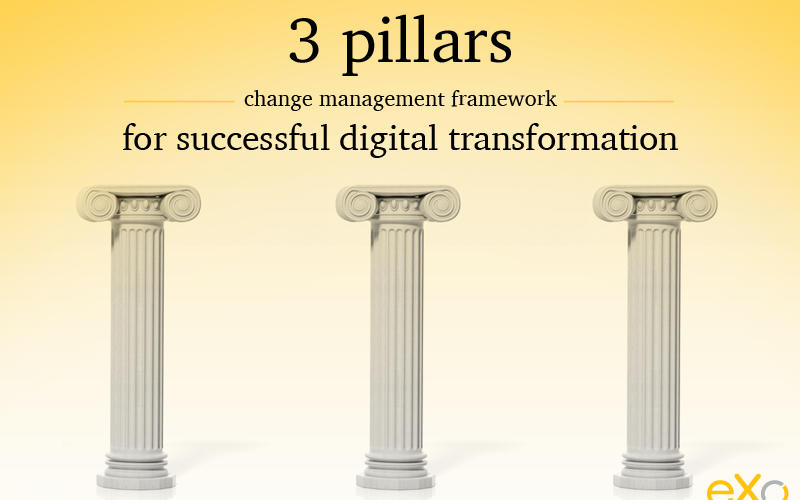
Content
As eXo’s COO, I naturally follow the change management challenges of our projects closely. In 8 cases out of 10, I am surprised as to how little awareness clients have of those challenges when they start. Not only are most companies not equipped to operate their change management internally, they often dive into the project without giving change management any thought.
To jump-start that thinking process, we use the three pillars change management framework described below. Not only is it useful to structure the process, it also helps cover all areas of change management and adoption in a digital transformation project, some of which might otherwise be ignored.
We refer to our three pillars change management framework as PCC. P stands for Product, C for Communication and the second C for Community Management.
1. P – Product.
The Product refers to any part of your digital transformation project that is technology related. Whether you endeavour to digitize by introducing new software, some in-house additions to your existing set-up or a new digital process, you need to minimize the digital friction for your users.
User interface, difficulty of use, knowledge curve, color scheme, what is to display and what is to hide…these are all things to consider to improve your target user experience. The smoother the experience, the easier the change in your users’ behavioural patterns.
Most clients put a strong emphasis on the Product part, spending a lot of time and effort to perfect the end-user digital journey, adding features, custom developments and integrations. This, in our experience, is not the surest way to successful change management and a successful project. The longer the confrontation between the end-user and the technology is put off, the stronger the risk of going too far in the wrong direction. In the same way, more developments and features lead to a more complex learning curve for the end-user. A more agile approach of introducing a pilot as soon as possible and then improve based on the user feedback is often best to achieve results.
Another risk is to stop your thinking at the Product part. Indeed, whatever the technology, it never brings change by itself – which brings us to the second part of our PCC framework…
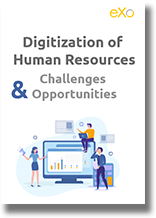
FREE WHITE PAPER
2. C – Communication.
Communicating about your project is an important pillar of any change management strategy. First, it can help explaining the reasons behind your initiative and the possible user benefits – what’s in it for me? If every one of your users sees the benefit of the new process for his daily tasks, you have done at least half the work.
Communication also allows to position your project within your company vision and culture. Why do you try to digitize? What is the company vision and how does this digital transformation help it along? A strong link between your enterprise culture and any ambitious project is key to succeed in on-boarding and engaging your target audience of users.
Finally, communication is here to build anticipation and momentum for your project. The goal here is to tease your users and entice their curiosity to try it out. One needs to be careful though not to promise too much so as to avoid creating a gap between promises and reality.
Of course communication alone is not enough, but it is a must-have for any digital transformation initiative. So what happens once you get your users to try?
3. C – Community management.
The term community management is often used in connection with enterprise social networks and driving new open behaviours at work. In the context of digital transformation, we use it more largely to regroup all initiatives aiming at promoting certain behaviours day after day.
Indeed, once your digital process is at its smoothest and you communicated largely about its benefits, you still need to onboard your users and help them adopt the change gradually. Providing technical support, a helpdesk, promoting the right behaviours through gamification, identifying your challenging users and helping them – are among the items to consider in this thinking process.
Once your consider all areas of possible friction covered by the PCC, as well as your way to deal with them, you will have a sound plan to succeed in your change management and your digital transformation project. Every aspect of your plan should come with a timeline, associated success KPIs and clear definition of roles and responsibilities.
I collaborated on this post with our change management expert, Morgan Argondicco. I hope you have found it interesting. We always look for new ideas and feedback! Leave us a comment.
tools and information
FAQ
What are the steps for successful change management process?
- Establish your goals
- Identify your constraints
- Assemble your dream team
- Define your strategy and action plan
- Put your plan into action
- Keep at it in agile mode
- Embed it into the organization

Related posts
- All
- eXo
- Digital workplace
- Open source
- Internal communication
- Collaboration
- News
- intranet
- Future of work
- workplace
- Knowledge management
- Employee engagement
- Employee experience
- Employee productivity
- onboarding
- Employee recognition
- Change management
- Cartoon
- Digital transformation
- Infographic
- Remote work
- Sneak Peek
- Solutions
- Thought leadership
- Tips & Tricks
- Tutorial
- Uncategorized
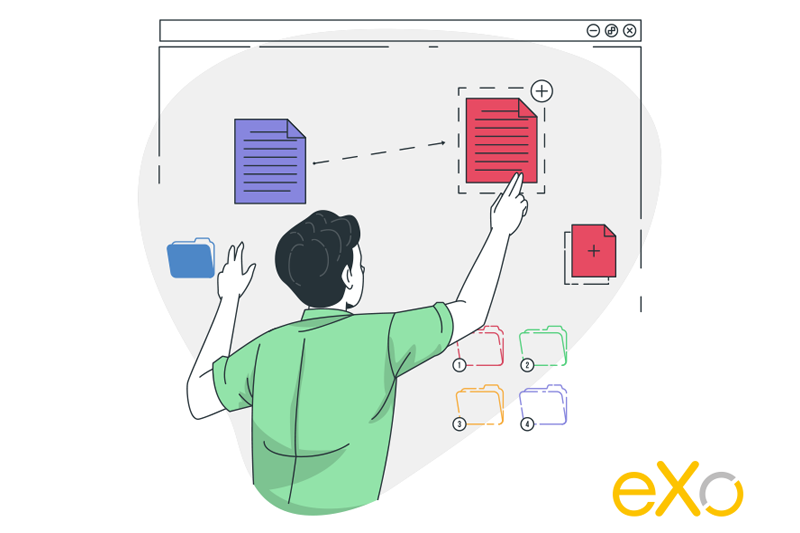
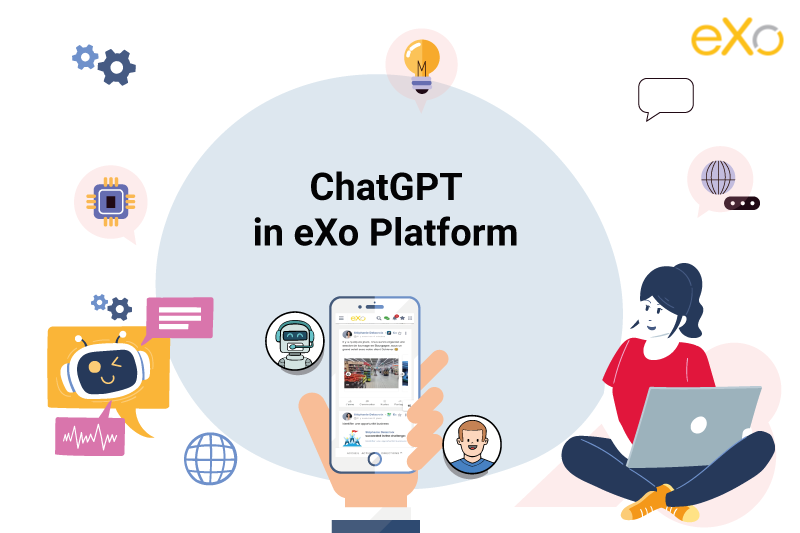
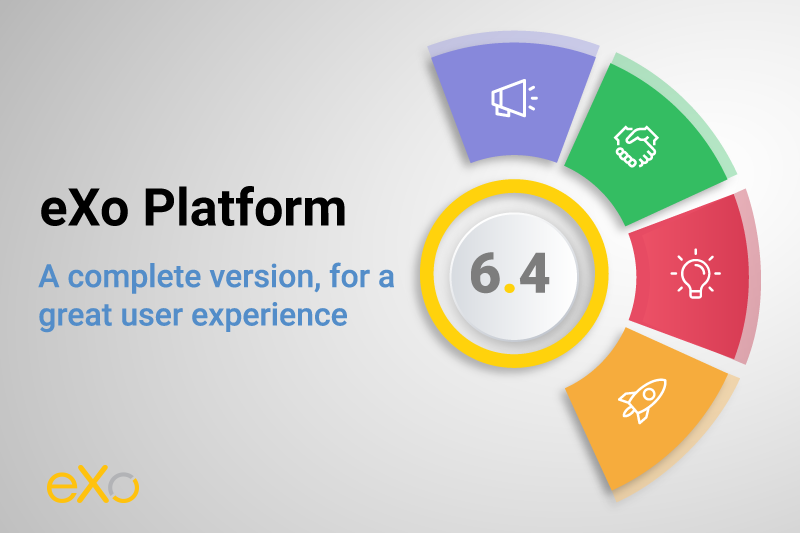
I could not refrain from commenting. Found this really interesting, thanks for sharing! Exceptionally well written on change management topic. We will be linking to this great content on our website. Keep up the good writing.